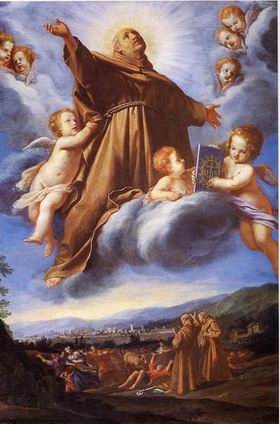Vincenzo Dandini: Difference between revisions
m →References: cite repair; |
Manannan67 (talk | contribs) added ref |
||
| Line 3: | Line 3: | ||
{{Commons category}} |
{{Commons category}} |
||
'''Vincenzo Dandini''' (1607–1675) was an Italian painter of the [[Baroque]] period, active mainly in [[Florence]]. |
'''Vincenzo Dandini''' (1607–1675) was an Italian painter of the [[Baroque]] period, active mainly in [[Florence]]. |
||
He was a pupil of his elder brother, [[Cesare Dandini]] and studied at the [[Accademia delle Arti del Disegno]] in Florence. He then moved to Rome and worked in the studio of [[Pietro da Cortona]].<ref name=Rockwell>[https://rockwellcenter.org/narrative-artists/vincenzo-dandini/ "Vincenzo Dandini", The Rockwell Center for American Visual Studies]</ref> |
|||
| ⚫ | He painted an ''Immaculate Conception'' and other canvases for the church of [[Ognissanti, Florence]]. He painted a fresco of the ''Aurora and the Hours'' for the [[Villa del Poggio Imperiale]]. He painted a canvas on oil of ''Sacrifice of Niobe'' for the [[Villa La Petraja]].<ref>[https://books.google.com/books?id=PbcvAAAAYAAJ Biblioteca enciclopedica italiana], Volume 14, by Nicolo Bettoni; Milan (1831); page 131.</ref> |
||
| ⚫ | He painted an ''Immaculate Conception'' and other canvases for the church of [[Ognissanti, Florence]]. He painted a fresco of the ''Aurora and the Hours'' for the [[Villa del Poggio Imperiale]]. He painted a canvas on oil of ''Sacrifice of Niobe'' for the [[Villa La Petraja]].<ref>[https://books.google.com/books?id=PbcvAAAAYAAJ Biblioteca enciclopedica italiana], Volume 14, by Nicolo Bettoni; Milan (1831); page 131.</ref> He also produced designs for the Medici tapestry factory.<ref name=Rockwell/> |
||
Among his pupils were [[Giovanni Battista Marmi]] and [[Antonio Domenico Gabbiani]].<ref name=Rockwell/> His nephew [[Pietro Dandini|Pietro]] and his two children, [[Ottaviano Dandini|Ottaviano]] and Vincezo the younger, also worked as painters in his studio. |
|||
==References== |
==References== |
||
{{Reflist}} |
{{Reflist}} |
||
<!--===Secondary Sources===--> |
|||
==Sources== |
|||
*{{cite book | first= James R.|last= Hobbes| year=1849| title= Picture collector's manual adapted to the professional man, and the amateur| pages= 72 | publisher= T&W Boone |location=London | url= https://books.google.com/books?q=intitle:picture+intitle:collector's }} |
*{{cite book | first= James R.|last= Hobbes| year=1849| title= Picture collector's manual adapted to the professional man, and the amateur| pages= 72 | publisher= T&W Boone |location=London | url= https://books.google.com/books?q=intitle:picture+intitle:collector's }} |
||
*[http://www.wga.hu/bio/d/dandini/cesare/biograph.html biography of Cesare] |
*[http://www.wga.hu/bio/d/dandini/cesare/biograph.html biography of Cesare] |
||
Revision as of 03:50, 24 July 2023

Vincenzo Dandini (1607–1675) was an Italian painter of the Baroque period, active mainly in Florence.
He was a pupil of his elder brother, Cesare Dandini and studied at the Accademia delle Arti del Disegno in Florence. He then moved to Rome and worked in the studio of Pietro da Cortona.[1]
He painted an Immaculate Conception and other canvases for the church of Ognissanti, Florence. He painted a fresco of the Aurora and the Hours for the Villa del Poggio Imperiale. He painted a canvas on oil of Sacrifice of Niobe for the Villa La Petraja.[2] He also produced designs for the Medici tapestry factory.[1]
Among his pupils were Giovanni Battista Marmi and Antonio Domenico Gabbiani.[1] His nephew Pietro and his two children, Ottaviano and Vincezo the younger, also worked as painters in his studio.
References
- ^ a b c "Vincenzo Dandini", The Rockwell Center for American Visual Studies
- ^ Biblioteca enciclopedica italiana, Volume 14, by Nicolo Bettoni; Milan (1831); page 131.
Sources
- Hobbes, James R. (1849). Picture collector's manual adapted to the professional man, and the amateur. London: T&W Boone. p. 72.
- biography of Cesare
